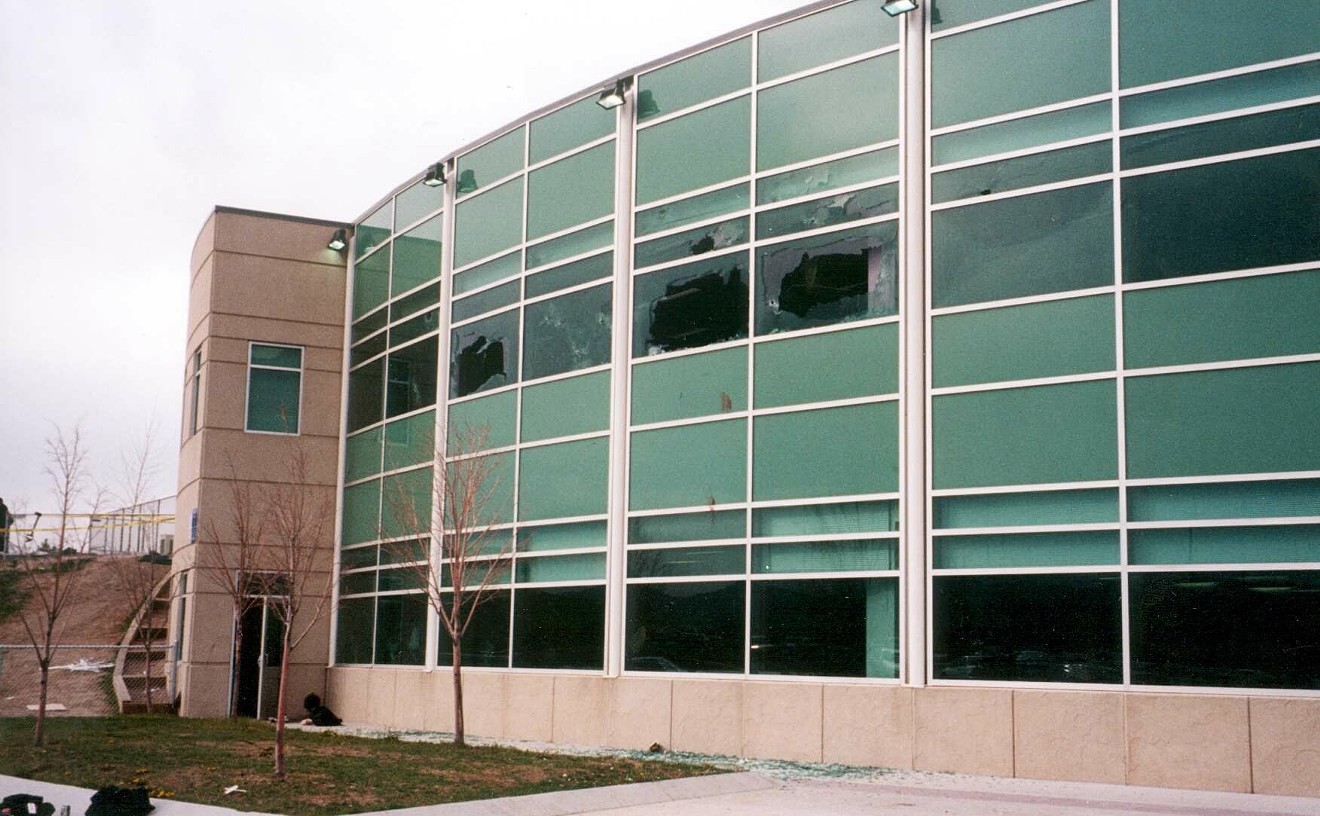This week's cover story, "The War Next Door," explores the long-running battle over the PCMS, a 235,000-acre site the Army acquired in the 1980s to prepare troops from Fort Carson for combat, and a current proposal for increased training there. After several political setbacks, the Army says it's put aside any plans to expand the PCMS for now. But landowners, preservationists and others are skeptical, given the grand scenario for expansion contained in military documents obtained by opponents through leaks and Freedom of Information Act requests.
Ranchers who've run cattle in southeastern Colorado for generations first started hearing rumors of possible expansion of the site in 2005. In fact, prompted by a growing concentration of troops at Fort Carson because of base closures and realignments, the military had been studying acquisition of additional land for years before that. But locals' first clue of the scale involved came in the form of a leaked map that looked a lot like this one: The map, which appears in a 2004 planning document, shows a series of phased-in purchases over many years, starting with modest strips of property adjoining the current site. But the entire deal would eventually encompass 6.9 million acres -- that's more than 10,000 square miles, a tenth of the entire state's land area. The Pinon Canyon Expansion Opposition Coalition promptly translated this into a more vividly colored map, on view below, to give a better idea of what the Army had in mind: The 2004 planning document states that the PCMS is ideally situated to become a training center for all the armed services -- and allied forces as well: "Given its size, remote location, diverse terrain, and infrastructure, PCMS far surpasses the training experience of any Combat Training Center in CONUS." (That's the contiguous United States, soldier.)The move would involve displacing a population of at least 17,000 civilians and transferring the Comanche National Grasslands from U.S. Forest Service to military control, but the study predicted that holding large-scale training exercises there "will be a positive change and natural wildlife habitation possibilities [will] increase."
Through FOIA requests, opponents of the expansion plan ultimately pried loose an even more revealing document -- an exhaustive 2005 study prepared by Fort Carson known as the "Pinon Vision" plan. Page down to see a key page; it talks about how the acquisition could eventually lead to ghost towns that would offer an "exciting opportunity" for urban training exercises:
Other sections of the "Pinon Vision" study identify critical decision-makers who must be persuaded to support the effort, from the Secretary of Defense to state political leaders, and the official "message" to put forth to the media about how nothing's been decided yet and the Army is just exploring options.
As this week's feature explains, the plans fizzled in the wake of their public disclosure and the ensuing outrage. But that doesn't mean they've gone away entirely; opponents fear that the current plan to increase training on the existing site is actually part of an effort to "overwhelm the resource" and justify expansion down the line.
Several of the expansion proposals, including the 2004 Analysis of Alternatives, are now posted in their entirety on the website of the Pinon Canyon Expansion Opposition Coalition.
More from our Follow That Story archive: "Wild horse roundups: Funding cut renews cries to end 'taxpayer-funded animal abuse' (VIDEO)."











